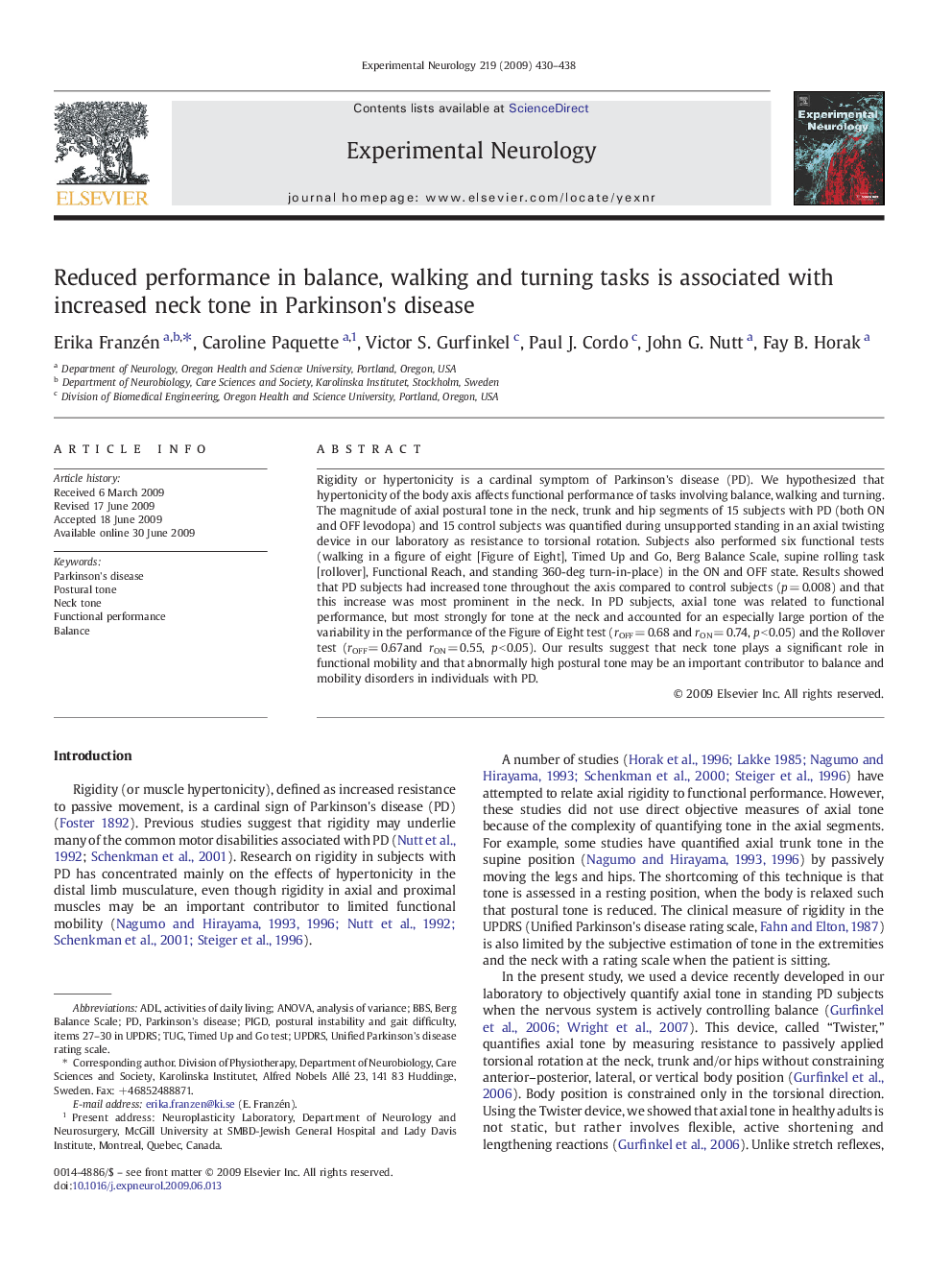| Article ID | Journal | Published Year | Pages | File Type |
|---|---|---|---|---|
| 3056252 | Experimental Neurology | 2009 | 9 Pages |
Rigidity or hypertonicity is a cardinal symptom of Parkinson's disease (PD). We hypothesized that hypertonicity of the body axis affects functional performance of tasks involving balance, walking and turning. The magnitude of axial postural tone in the neck, trunk and hip segments of 15 subjects with PD (both ON and OFF levodopa) and 15 control subjects was quantified during unsupported standing in an axial twisting device in our laboratory as resistance to torsional rotation. Subjects also performed six functional tests (walking in a figure of eight [Figure of Eight], Timed Up and Go, Berg Balance Scale, supine rolling task [rollover], Functional Reach, and standing 360-deg turn-in-place) in the ON and OFF state. Results showed that PD subjects had increased tone throughout the axis compared to control subjects (p = 0.008) and that this increase was most prominent in the neck. In PD subjects, axial tone was related to functional performance, but most strongly for tone at the neck and accounted for an especially large portion of the variability in the performance of the Figure of Eight test (rOFF = 0.68 and rON = 0.74, p < 0.05) and the Rollover test (rOFF = 0.67and rON = 0.55, p < 0.05). Our results suggest that neck tone plays a significant role in functional mobility and that abnormally high postural tone may be an important contributor to balance and mobility disorders in individuals with PD.
